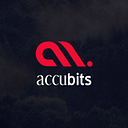Building a scalable multi-tenant SaaS platform
An overview of how to build a scalable multi-tenant SaaS platform and how to choose the right tenancy model.
In this article, we’ll discuss the know-hows and best practices of building a SaaS platform that is scalable and secure.
The demand for multi tenant SaaS (Software as a service) platforms are growing. According to a tech poll conducted by IDG (a leading data, and marketing services company), 73% of organizations are planning to move almost all of their apps to SaaS by 2020. Without any surprises, this has resulted in the emergence of numerous SaaS Startups.
Why Multi-tenancy?
A multi-tenant application allows you to serve multiple customers with just one installation of the application. Each customer is called a tenant and they pay money to access your SaaS application components and stores their data in the SaaS system. There are multiple tenancy models like single-tenancy, multi-tenancy and hybrid tenancy. Here, the term tenancy means how the tenants’ data is stored and organised in the SaaS platform. In a single tenancy system, each database stores data from only one tenant, whereas in multi-tenancy system, each database stores data from multiple tenants. Hybrid tenancy is a mix of single-tenancy and multi-tenancy, bringing the best of both in one architecture.
From a business owners’ point of view, the major benefits in using a multi tenant architecture are in reducing the infrastructure cost and efficient resource usage.
To gain a better understanding of the importance of KYC in a multi-tenancy model, this article would be very useful:
How to choose the right tenancy model ?
The functionalities of the application does not have a great dependence on the tenancy model that you choose. However, it depends on a few factors listed below:
- Size of tenant database
- Number of tenants
- Number of users per tenant
- Growth rate of tenants
- Growth rate of tenant database
- Security
- Cost
- Flexibility — ability to create multiple tables by tenants
- Regulatory consideration
- Customizability
- Recovery options
The best practices in building a multi-tenant SaaS platform
The SaaS platform you intend to build is most likely to serve customers from all over the world. Hence, it is a good thought to localize the platform. Make sure the contents shown in the platform are regionalized and the pricing is in the currency of the buyer.
- Personalization with the SaaS application- Users should be able to personalize their experience to suit their personal preferences.
- Integrations and Ecosystem- The application should be designed to accommodate as many apps or service integrations as possible.
- Reliable operational performance- A multi-tenant SaaS application should be designed in such a way that its performance is scalable and always available. It should be able to serve tenants of all sizes.
- Secure and compliant with industry standards and regulations- Multi-tenant SaaS providers have the sole responsibility when it comes to the security of both the SaaS application, stored data, and the accompanying hardware.
- Constant monitoring and maintenance- The SaaS provider must monitor the SaaS application constantly. They should be on the lookout for down-times and get the application back up and working again if such a situation occurs.
Multi-tenant SaaS architecture provides many long-term benefits for both service providers as well as users in terms of maintenance, cost of investment, or development. These are some of the best practices one needs to follow while designing and providing a multi-tenant SaaS application. These best practices will help your company or start-up to design a multi-tenant SaaS application that will run efficiently and meet the expectations of your customers. Let’s talk if you need help in developing a SaaS platform or your next product.
Explore more about this topic in here:
